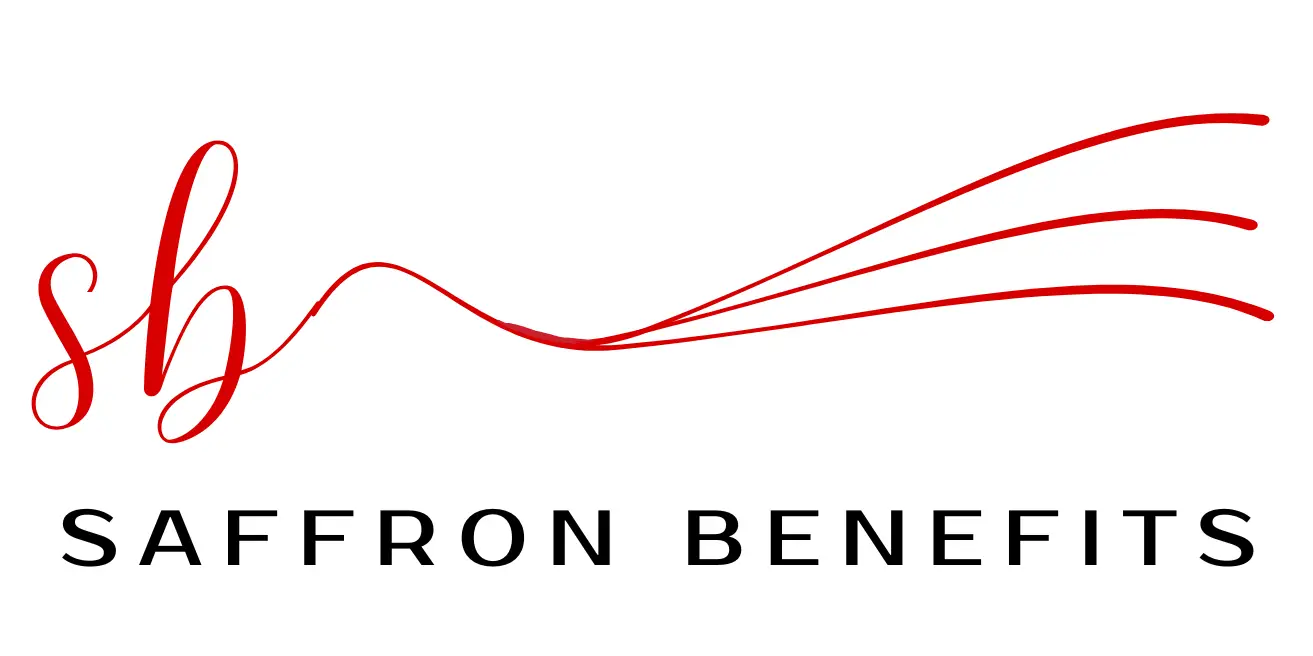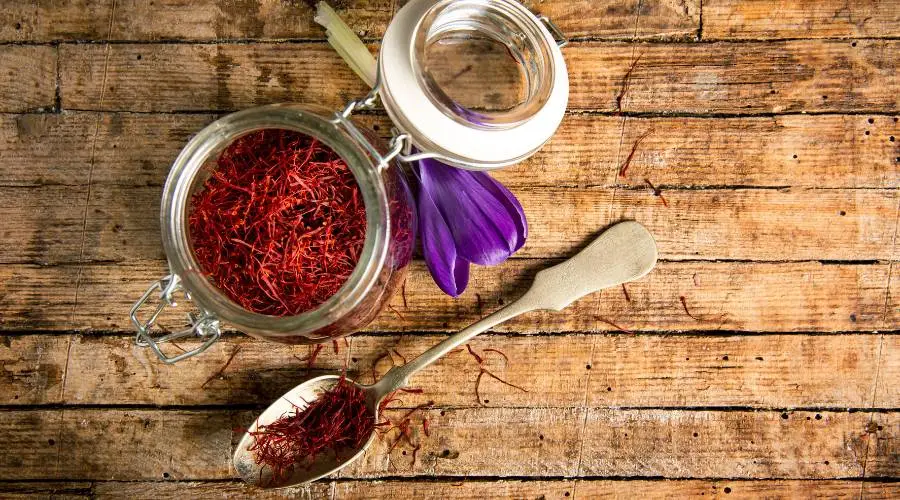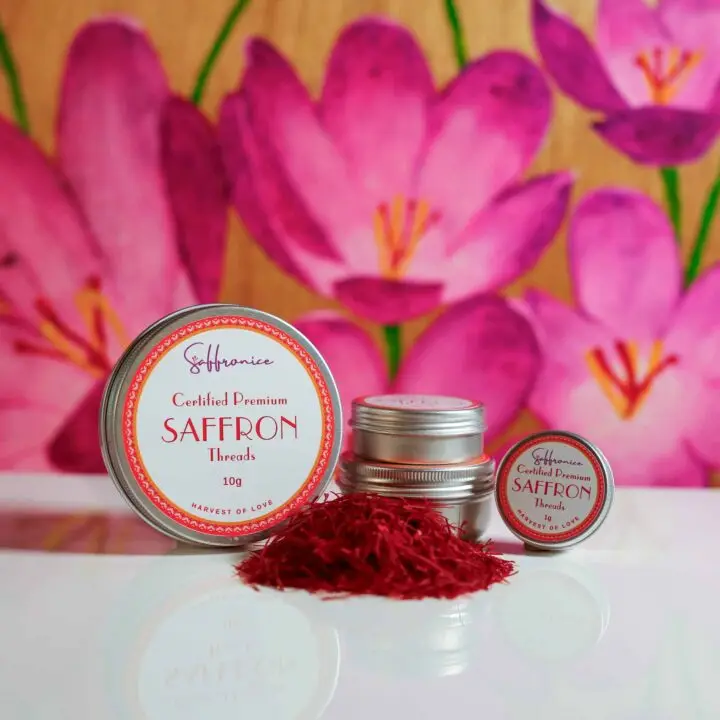📌 Quick Answer: Saffron grading systems evaluate quality through color intensity (crocin content), aroma strength (safranal levels), stigma length, and thread thickness. The ISO standards provide global benchmarks, while regional systems like Iranian (Sargol, Negin, Pushal) and Spanish (Cupe, Mancha, Mundo) offer specialized classifications for this precious spice.
Introduction to Saffron Quality Assessment
What is saffron without proper quality standards? As the world’s most expensive spice, saffron’s value hinges entirely on systematic grading that ensures authenticity and consistency. Understanding these grading systems is essential for producers, traders, and consumers navigating this complex market.
Historical Development of Quality Standards
The history and origins of saffron quality assessment trace back to ancient civilizations where this precious spice held cultural and religious significance. Persian, Greek, and Spanish regions developed traditional grading methods based on color intensity, aroma strength, and thread characteristics.
Over centuries, these regional approaches evolved into sophisticated systems that balance traditional knowledge with modern scientific analysis. Today’s saffron quality standards represent this rich heritage combined with contemporary testing methods.
Why Standardized Grading Matters
Standardized grading systems serve multiple critical functions:
- Market Integrity: Ensures fair pricing based on actual quality
- Consumer Protection: Prevents fraud and adulteration
- International Trade: Facilitates global commerce with common standards
- Quality Consistency: Maintains reliability across different producers
- Brand Trust: Builds confidence in premium saffron products
Chef’s Professional Tip: In my culinary experience, even slight variations in saffron grade can dramatically alter a dish’s color, aroma, and flavor profile. Understanding grading helps chefs select the right saffron for specific applications.
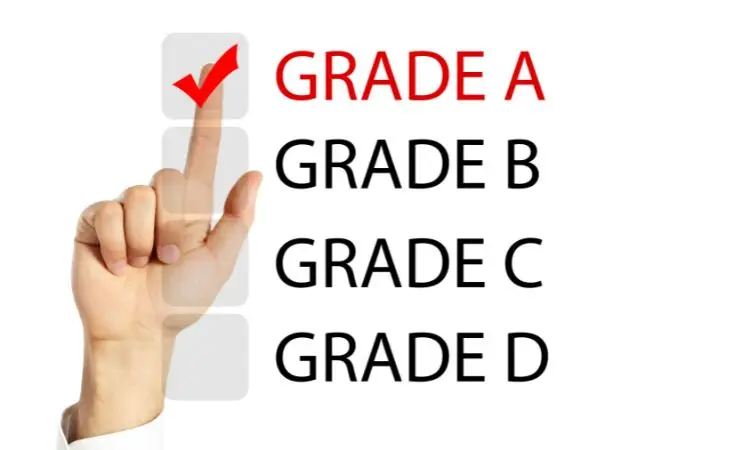
International Saffron Grading Systems Overview
The global saffron market operates through diverse grading frameworks, each reflecting regional expertise and market preferences. These systems create a complex but comprehensive approach to quality assessment.
Major Grading Frameworks
Spanish Classification System:
- Cupe: Premium grade with intense color and aroma
- Mancha: Standard commercial grade
- Mundo: Lower commercial grade
Iranian Quality Categories:
- Sargol: All-red stigma tips, highest quality
- Negin: Premium grade with longer threads
- Pushal: Red stigmas with some yellow/white parts
International Standards:
- ISO Classification: Global benchmark system
- Regional Certifications: DOP (Spain), Geographic indicators
| Grading System | Primary Criteria | Grade Categories |
|---|---|---|
| Spanish | Color intensity, thread length | Cupe, Mancha, Mundo |
| Iranian | Purity, stigma composition | Sargol, Negin, Pushal |
| ISO | Chemical composition, physical traits | Category I, II, III |
These diverse systems highlight how premium saffron vs regular saffron manifests across different cultural and commercial contexts.
Key Components of Saffron Quality Testing
Modern saffron assessment combines traditional expertise with scientific precision. Understanding these testing components helps distinguish authentic quality from marketing claims.
Chemical Analysis Methods
Crocin Content Measurement: Crocin determines saffron’s coloring power, measured through spectrophotometric analysis. Higher crocin levels indicate superior quality and stronger dyeing capacity.
Picrocrocin Analysis: This compound creates saffron’s distinctive bitter-sweet taste. Saffron purity testing measures picrocrocin to verify authenticity and flavor strength.
Safranal Evaluation: Safranal provides saffron’s characteristic aroma. Quality testing quantifies this volatile compound to assess aromatic intensity and overall sensory experience.
Physical Characteristic Assessment
Thread Length Standards: Premium saffron typically features stigmas measuring 20-25mm, while commercial grades may have shorter threads (15-20mm). Length correlates with maturity and handling quality.
Thickness Requirements: Thread diameter ranges from 0.6-0.9mm for premium grades. Thicker threads often contain higher concentrations of active compounds.
Color Uniformity: Visual assessment examines color consistency, with deep crimson indicating optimal quality. Saffron coloring strength directly impacts culinary and commercial value.
Sensory Evaluation Techniques
Trained panels assess saffron aroma and flavor profiles through standardized protocols. This human element complements instrumental analysis, providing comprehensive quality verification.
Food Scientist’s Note: Chemical analysis provides objective data, but sensory evaluation captures the subtle nuances that make saffron special. Both approaches are essential for complete quality assessment.
ISO Standards for Global Saffron Classification
The International Organization for Standardization provides the framework for global saffron trade, establishing universal quality benchmarks that transcend regional differences.
ISO Classification Categories
Category I (Highest Quality):
- Crocin content: ≥200 (measured at 440nm)
- Picrocrocin: ≥70 (measured at 257nm)
- Safranal: 20-50 (measured at 330nm)
- Foreign matter: <0.5%
Category II (Standard Quality):
- Crocin content: ≥170
- Picrocrocin: ≥55
- Safranal: 20-50
- Foreign matter: <1%
Category III (Commercial Quality):
- Crocin content: ≥100
- Picrocrocin: ≥40
- Safranal: 20-50
- Foreign matter: <2%
Testing Protocol Requirements
ISO standards mandate specific laboratory procedures using calibrated spectrophotometers and standardized sample preparation methods. This ensures consistency across different testing facilities worldwide.
The standards also specify packaging requirements, labeling protocols, and storage conditions to maintain quality throughout the supply chain. Understanding these requirements helps consumers know where to buy saffron online from reputable sources.
Color Grading and Crocin Content Measurement
Saffron’s vibrant color represents its most recognizable quality indicator. Scientific measurement of this characteristic provides an objective quality assessment beyond visual inspection.
Spectrophotometric Analysis
Modern testing employs UV-visible spectrophotometry to measure crocin content precisely. Samples undergo extraction in water, then analysis at 440nm wavelength to determine coloring strength.
Measurement Process:
- Sample preparation with distilled water
- Extraction at controlled temperature
- Spectrophotometric reading at 440nm
- Calculation of crocin content per unit
Visual Assessment Integration
While instruments provide precise measurements, experienced graders also conduct visual evaluations. This combination ensures both scientific accuracy and practical quality assessment.
Quality Color Indicators:
- Deep crimson: Premium grade indication
- Uniform coloring: Proper processing and handling
- Thread consistency: Evidence of careful selection
- Absence of yellowing: Freshness indicator
Professional buyers often combine both approaches, using instrumental data to verify visual assessments and ensure purchasing decisions meet quality requirements.
Physical Characteristics and Grade Categories
Beyond chemical composition, saffron’s physical attributes provide immediate quality indicators accessible to both professionals and consumers.
Stigma Length Classifications
Premium Grade Requirements:
- Length: 25-30mm
- Appearance: Complete, unbroken threads
- Uniformity: Consistent sizing throughout batch
- Color: Deep red throughout the length
Commercial Grade Standards:
- Length: 15-25mm
- Acceptable breakage: Limited fragmentation
- Color variation: Some lighter areas permitted
- Processing: May include mixed grades
Thread Thickness and Density
Thickness measurements correlate with saffron maturity and active compound concentration. Thicker threads typically indicate:
- Higher crocin content: Enhanced coloring power
- Better aroma retention: More volatile compounds
- Superior cooking performance: Consistent flavor release
- Extended shelf life: Better compound stability
Quality saffron cultivation practices directly impact these physical characteristics, making origin and farming methods important quality factors.
Regional Standards and Specializations
Different saffron-producing regions have developed specialized grading systems reflecting local expertise, terroir characteristics, and market preferences.
Iranian Classification System
Iran produces approximately 90% of the world’s saffron, developing sophisticated grading reflecting this expertise:
Sargol Grade:
- Pure red stigma tips only
- No yellow or white parts
- Highest crocin concentration
- Premium market positioning
Negin Grade:
- Longer red threads (25-30mm)
- Minimal style inclusion
- Superior visual presentation
- Restaurant and luxury market focus
Pushal Grade:
- Red stigmas with attached styles
- Lower processing costs
- Good value proposition
- Home cooking applications
Spanish DOP Standards
Spain’s Denomination of Protected Origin ensures geographic authenticity and traditional processing methods:
- Territorial Requirements: Specific growing regions
- Processing Standards: Traditional drying methods
- Quality Minimums: Strict chemical composition limits
- Traceability: Complete supply chain documentation
Kashmiri Premium Standards
Kashmir saffron enjoys geographic protection with unique quality characteristics:
- Longer stigmas: Average 25-28mm length
- Intense aroma: High safranal content
- Rich color: Deep crimson appearance
- Limited production: Scarcity adds to value
Understanding these regional differences helps consumers appreciate quality variations and make informed purchasing decisions when they compare saffron brands.
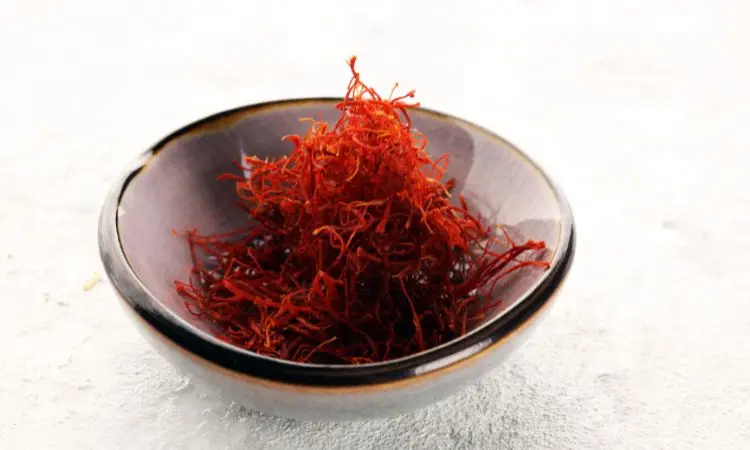
Premium vs Commercial Grade Distinctions
The saffron market clearly differentiates between premium and commercial grades through measurable quality indicators and corresponding price structures.
Premium Grade Characteristics
Chemical Profile:
- Crocin content: >250 (spectrophotometric units)
- Picrocrocin: >80 units
- Safranal: 30-50 units
- Moisture content: <12%
Physical Attributes:
- Thread length: >25mm average
- Thickness: 0.7-0.9mm diameter
- Color: Deep, uniform crimson
- Foreign matter: <0.1%
Sensory Qualities:
- Intense, complex aroma
- Rich, slightly bitter taste
- Long-lasting flavor impact
- Consistent performance
Commercial Grade Standards
Acceptable Quality Ranges:
- Crocin content: 150-200 units
- Thread length: 18-25mm
- Moderate aroma intensity
- Good cooking performance
Value Proposition:
- Cost-effective for regular use
- Suitable for most culinary applications
- Reliable quality consistency
- Accessible pricing
Chef’s Professional Tip: For home cooking, commercial-grade saffron often provides excellent results at a fraction of premium prices. Save premium grades for special occasions or dishes where saffron is the starring ingredient.
The price differential between grades can range from 2:1 to 5:1, making grade selection an important economic consideration for both professional and home kitchens.
Authentication and Quality Verification
As saffron’s value increases, so does adulteration risk. Modern authentication combines traditional expertise with advanced analytical techniques.
Common Adulteration Methods
Physical Adulterants:
- Safflower petals (similar appearance)
- Turmeric powder (color enhancement)
- Corn silk threads (volume extension)
- Artificial coloring agents
Detection Techniques:
- Microscopic examination
- Chemical fingerprinting
- DNA barcoding
- Spectral analysis
Laboratory Authentication Protocols
Advanced Testing Methods:
- HPLC analysis for compound verification
- Mass spectrometry for molecular identification
- Isotope ratio analysis for geographic verification
- Genetic testing for species confirmation
Field Testing Options:
- Water dissolution tests
- Aroma evaluation protocols
- Color stability assessments
- Thread examination techniques
Certification and Verification Systems
Reputable suppliers provide:
- Laboratory certificates: Third-party quality verification
- Origin documentation: Geographic authenticity proof
- Grade certification: Quality standard compliance
- Batch tracking: Supply chain transparency
When consumers need to spot the difference between real vs fake saffron, understanding these authentication methods provides valuable protection against fraud.
Food Scientist’s Note: Advanced analytical techniques can detect adulterants at trace levels, but basic tests like water dissolution and aroma assessment catch most common frauds. Consumers should learn both approaches.
Proper Storage and Quality Maintenance
Even premium-grade saffron loses quality without proper handling. Understanding storage requirements preserves investment and ensures consistent performance.
Storage Environment Requirements
Temperature Control:
- Ideal range: 15-20°C (59-68°F)
- Avoid temperature fluctuations
- Prevent heat exposure
- Maintain consistent conditions
Moisture Protection:
- Maximum humidity: <60%
- Airtight containers essential
- Desiccant packets beneficial
- Monitor moisture levels
Light Protection:
- Store in dark containers
- Avoid direct sunlight
- Use opaque packaging
- Minimize light exposure
Quality Preservation Techniques
Following proper saffron storage methods maintains grade characteristics throughout shelf life. Key practices include:
- Container Selection: Glass or food-grade metal
- Portion Control: Small container sizes
- Usage Tracking: First-in, first-out rotation
- Regular Assessment: Periodic quality checks
With proper storage, premium saffron maintains quality for 2-3 years, while commercial grades typically preserve characteristics for 18-24 months.
Understanding Dosage and Usage by Grade
Different saffron grades require adjusted usage amounts to achieve desired culinary results, making grade selection a practical cooking consideration.
Grade-Based Usage Guidelines
Premium Grade Applications:
- Delicate dishes where saffron stars
- Minimal quantity needed (pinch per 4 servings)
- Superior color and aroma development
- Cost-effective for special occasions
Commercial Grade Applications:
- Everyday cooking applications
- Slightly higher quantities needed
- Good performance in mixed spice dishes
- Economical for regular use
Professional Cooking Considerations: Understanding proper saffron dosage daily requirements helps optimize both culinary results and cost management across different grade selections.
The relationship between grade, dosage, and results makes quality assessment directly relevant to practical cooking success and economic efficiency.
Health Benefits and Quality Correlation
Saffron’s health benefits directly correlate with quality grades, as active compound concentrations determine therapeutic potential.
Quality-Dependent Health Properties
High-Grade Saffron Benefits:
- Maximum antioxidant activity
- Optimal mood-supporting compounds
- Enhanced bioavailability
- Consistent therapeutic dosing
Active Compound Relationships:
- Crocin: Antioxidant and neuroprotective effects
- Picrocrocin: Digestive and metabolic support
- Safranal: Mood regulation and cognitive benefits
Higher-grade saffron contains more concentrated levels of these beneficial compounds, potentially providing greater therapeutic value per dose.
Conclusion
Saffron grading systems represent the intersection of ancient wisdom and modern science, creating frameworks that protect consumers while celebrating this remarkable spice’s diversity. From ISO standards to regional specializations, these systems ensure quality, authenticity, and fair trade practices.
Understanding grading empowers informed purchasing decisions, whether selecting commercial grades for everyday cooking or investing in premium saffron for special occasions. As the market evolves, these standards continue protecting saffron’s reputation while supporting sustainable production practices.
For consumers seeking authentic saffron, knowledge of grading systems provides the foundation for confident purchasing decisions. Combined with proper storage and usage techniques, this understanding maximizes both culinary success and investment value.
To learn more about saffron basics and quality considerations, explore our comprehensive guide on saffrons and discover the fascinating world behind this precious spice.
FAQ
What are the main factors in saffron grading systems?
Saffron grading evaluates color intensity (crocin content), aroma strength (safranal levels), flavor compounds (picrocrocin), thread length, thickness, and purity. These factors combine to determine overall quality grades from premium to commercial classifications.
How do ISO standards differ from regional grading systems?
ISO standards provide global benchmarks using scientific measurements, while regional systems like Iranian (Sargol, Negin, Pushal) or Spanish (Cupe, Mancha, Mundo) incorporate local expertise and traditional quality indicators specific to their terroir and processing methods.
What laboratory tests determine saffron quality?
Quality testing uses spectrophotometric analysis to measure crocin, picrocrocin, and safranal content, plus HPLC for compound verification, microscopic examination for purity, and sensory evaluation by trained panels for aroma and flavor assessment.
Can consumers identify high-quality saffron without laboratory testing?
Yes, consumers can assess quality through thread appearance (deep crimson color, 20-25mm length), aroma intensity (strong, honey-like scent), water test results (golden color development), and thread examination (uniform thickness, minimal breakage).
What’s the difference between premium and commercial-grade saffron?
Premium saffron features crocin content >250 units, longer threads (>25mm), intense aroma, and minimal foreign matter. Commercial grade has crocin 150-200 units, shorter threads, moderate aroma, but still provides good culinary performance at a lower cost.
How do regional saffron standards compare globally?
Iranian standards emphasize purity and stigma composition, Spanish DOP focuses on geographic origin and traditional processing, while Kashmiri grades highlight longer stigmas and intense aroma. Each system reflects local expertise and market preferences while maintaining quality integrity.
